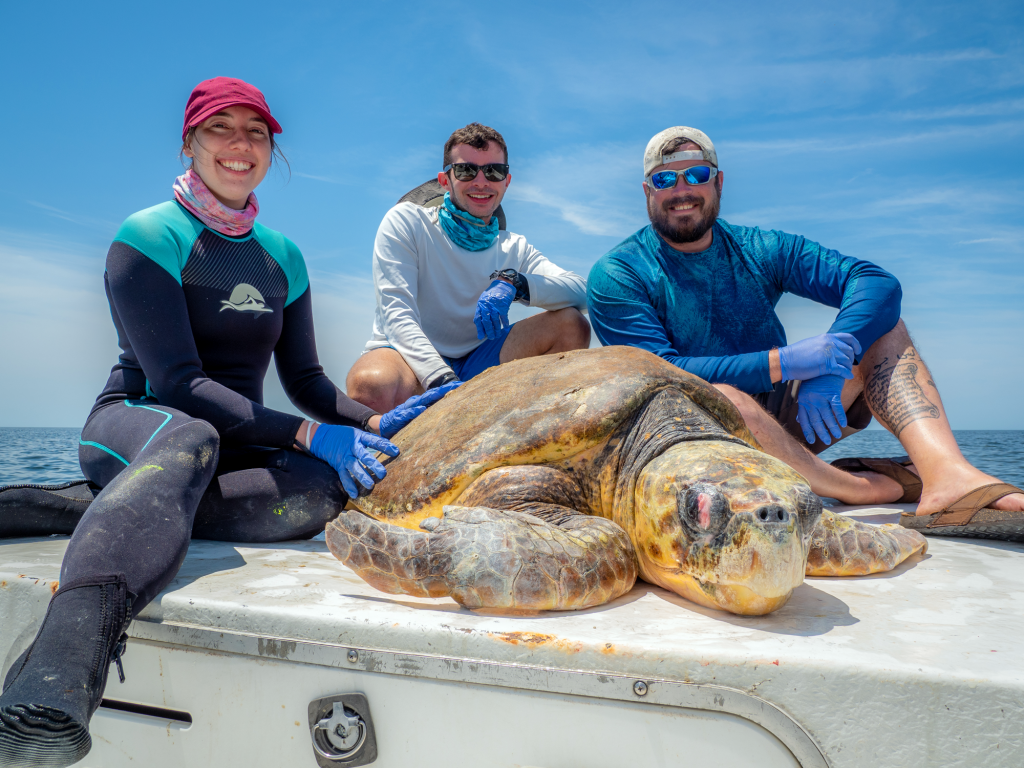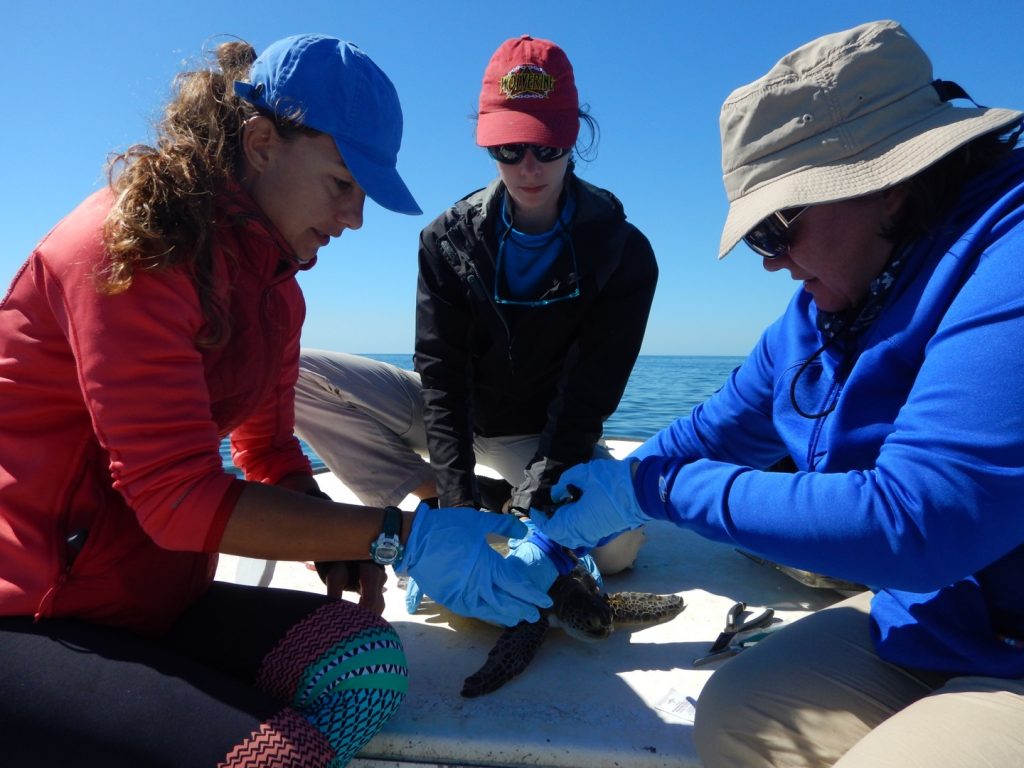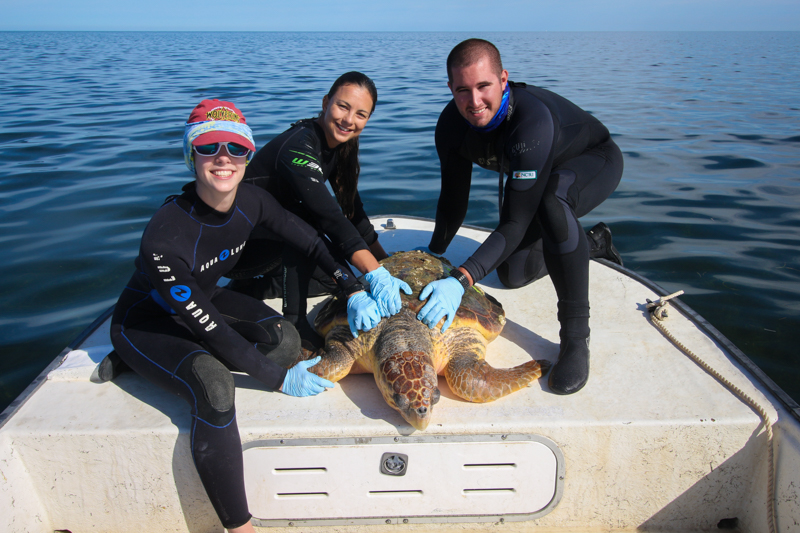The Gulf of Mexico provides critical foraging habitats for neritic loggerhead, green, Kemp’s ridley, and hawksbill turtles, all of which are listed as threatened or endangered under the U.S. Endangered Species Act. Despite the importance of the region to these four species of marine turtles, a coordinated in-water research and monitoring network does not exist. This hinders our understanding of the marine turtle population structure and abundance in the region, habitat use, movement, and their trophic ecology, which is essential to diagnose causes of decline and to inform and advance management. Therefore, the overarching objectives of this project are to 1) investigate marine turtle seasonal distribution and movement within and among habitats and 2) collect information on their population structure to potentially diagnose declines, inform and advance management, and evaluate the efficacy of recovery actions.
POPULATION STRUCTURE AND FORAGING AGGREGATION OF SEA TURTLES IN THE GULF OF MEXICO
PUBLICATIONS
Ceriani, S. A., Murasko, S., Addison, D. S., Anderson, D., Curry, G., Desjardin, N. A., ... Fuentes, M. M. P. B. , ... & Casale, P. (2023). Monitoring population-level foraging distribution of a marine migratory species from land: strengths and weaknesses of the isotopic approach on the Northwest Atlantic loggerhead turtle aggregation. Frontiers in Marine Science.
Weber, S., Cullen, J. A., Fuentes, M. M. P. B. . (2023). Isotopic niche overlap among foraging marine turtle species in the Gulf of Mexico. Ecology and Evolution, 13(11), e10741.
Weber, S.M., Ceriani, S.A., Fuentes, M. M. P. B. (2023). Foraging ecology of Kemp's ridley (Lepidochelys kempii) turtles in the northeastern Gulf of Mexico: insights from stable isotope analysis. Marine Biology. 170:104 .
Silver-Gorges, I., Ceriani, S. A., Fuentes, M. M. P. B. (2023). Fine-scale intraspecific niche partitioning in a highly mobile, marine megafauna species: implications for ecology and conservation. Royal Society Open Science. https://doi.org/10.1098/rsos.221529
Siegfried, T., Noren, C., Reimer, J., Ware, M., Fuentes, M. M. P. B. , Piacenza, S. E. (2021). Insights Into Sea Turtle Population Composition Obtained with Stereo-Video Cameras in situ Across Nearshore Habitats in the Northeastern Gulf of Mexico. Frontiers in Marine Science, 8(1501).
COLLABORATIONS
- Simona Ceriani, Fish and Wildlife Conservation Commission
- Chris Sasso, NOAA’s Southeast Fisheries Science Center
- Tim Jones, Florida Department of Environmental Protection
FUNDING
Sea Turtle License Plate
Waterlust
Waterlust



